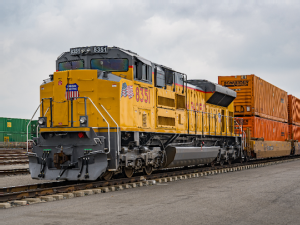With little change in the conditions affecting trucking, FTR’s Trucking Conditions Index (TCI) for January eased from December to a new reading of 2.04. Improved capacity utilization in the sector was more than offset by weaker demand and weaker rates than in the previous month. Although fundamentals would suggest a stable outlook, coronavirus fears and related market turmoil pose risks.
With the March report, FTR has implemented changes to Trucking Update to provide better segmentation and the ability to quickly understand the content. Among the changes are a grouping of freight volumes and rates by segment to better show market pressures; more data on spot market metrics to add insights on freight market trends; and expanded sections on the economic environment and driver situation.
Details of the January TCI are found in the March issue of FTR’s Trucking Update, published February 28. The report’s commentary discusses how the coronavirus outbreak might affect U.S.-China trade and other aspects of trucking. Along with the TCI and commentary, Trucking Update includes data and analysis on load volumes, the capacity environment, rates, costs, and the truck driver situation.
Avery Vise, vice president of trucking, commented, “Until late February, we expected to see a gradual but steady recovery in trucking conditions after a mildly weak first quarter. The panic over the coronavirus as well as recent developments regarding global oil markets have injected considerable risk and uncertainty into this outlook. While many of those risks are to the downside, the situation also could develop in ways that might benefit trucking companies in the coming months in terms of volume, utilization, and rates.”
The TCI tracks the changes representing five major conditions in the U.S. truck market. These conditions are: freight volumes, freight rates, fleet capacity, fuel price, and financing. The individual metrics are combined into a single index indicating the industry’s overall health. A positive score represents good, optimistic conditions. Conversely, a negative score represents bad, pessimistic conditions. Readings near zero are consistent with a neutral operating environment, and double-digit readings (up or down) suggest significant operating changes are likely.











